How Many Miles Are In A Marathon?
Marathon distance in Miles
For those in the United States, where the imperial system is used, a standard marathon distance spans 26.2 miles.
If you've had the experience of running a half marathon, you're probably already aware that it covers a distance of 13.1 miles, precisely half of the full marathon.
Marathon distance in Kilometers
For those residing outside the United States and using the metric system, you might be interested in knowing the marathon distance in kilometers.
The half marathon covers a distance of approximately 21.1 kilometers, precisely half of the full standard marathon distance of 42.2 kilometers.
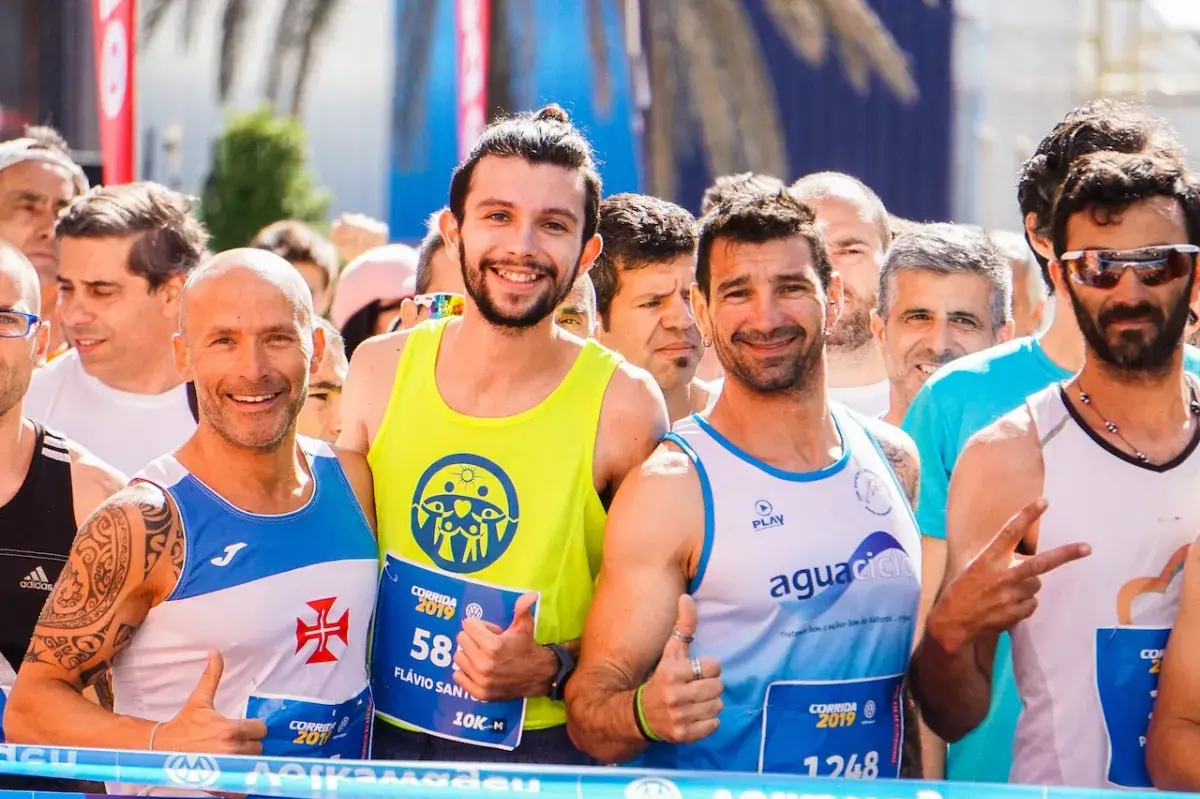
The History of the Marathon
The name "Marathon" originates from the ancient Greek legend of Philippides (or Pheidippides), a messenger during the Battle of Marathon in 490 BC. The legend states that as the Greeks neared victory over the Persians, Philippides saw a Persian ship changing course toward Athens.
He interpreted this as an attempt by the defeated Persians to lay claim to Athens, so he ran to the city to warn them. Philippides supposedly ran the entire distance from Marathon to Athens, roughly 25 miles, without stopping, even shedding his weapons and clothes to travel faster.
He arrived at the assembly, proclaiming "nenikēkamen" ("we have won!") before collapsing and dying. Plutarch first recorded this story in the 1st century AD.
Historical accuracy remains a point of debate. Herodotus, an ancient historian, mentions a messenger named Philippides who ran from Athens to Sparta, but he does not describe the Marathon-to-Athens run. Some Herodotus manuscripts mention Philippides running to Athens, further muddying the historical waters.
The route Philippides took in the legend raises questions as well. If he ran from Marathon to Athens, he would have had to circumvent Mount Pentelicus, taking a route similar to the modern Marathon-Athens highway. This course is about 25 miles long, consistent with the distance of modern marathon races. However, Philippides might have taken an alternative route, which was shorter but included a steep climb.
The legend has been popularized through literature and culture, such as Robert Browning's 1879 poem "Pheidippides," contributing to its acceptance as a historical account.
The legend of Philippides and the Marathon run centers on a messenger's sprint from the Battle of Marathon to Athens to convey news of the Greek victory. While the story has been engrained in popular culture, historical accuracy remains to be determined, as conflicting accounts and routes exist.
Regardless, it has left an enduring legacy and is the basis for the modern marathon race, which covers a distance similar to Philippides' legendary run.
9 World's Oldest Annual Marathons
These old marathons have rich histories and have played significant roles in developing and popularizing marathon running.
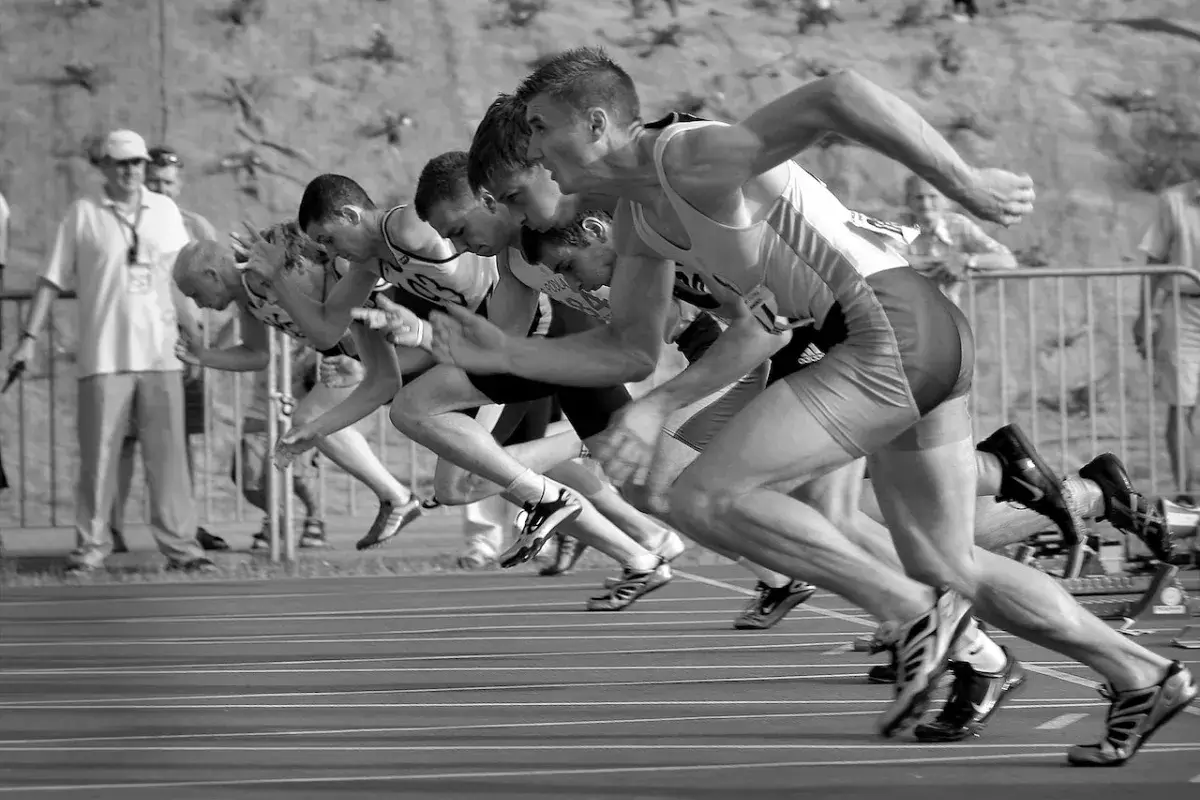
- Boston Marathon: Established in 1897, the Boston Marathon is one of the most famous and prestigious marathons globally. The Boston Marathon is held on Patriots' Day in April.
- Yonkers Marathon: Founded in 1907, the Yonkers Marathon in New York is one of the oldest in the United States.
- Pikes Peak Marathon: First run in 1956, Pikes Peak marathon in Colorado includes a challenging ascent up Pikes Peak.
- Comrades Marathon: Established in 1921, the Comrades Marathon in South Africa is among the world's most celebrated ultra-marathons.
- Fukuoka International Open Marathon: This Japanese marathon began in 1947 and was traditionally an elite men's event.
- Kawasaki Shinyo-Aurora Marathon: Originating in 1947, this marathon in Kawasaki, Japan, features a scenic course along the Tama River.
- Beppu-Oita Mainichi Marathon: Established in 1952, Beppu-Oita Mainichi marathon in Japan is known for its flat and fast course.
- Western Hemisphere Marathon (Panama): Founded in 1953, this marathon offers a unique international experience.
- Lake Biwa Mainichi Marathon: First run in 1946, this marathon in Japan is one of the oldest in Asia.
First Modern Olympic Games and First Marathon
The first modern Olympic Games were held in Athens, Greece, from April 6–15, 1896. The games were held in the Panathenaic stadium.
The games were attended by 280 athletes, all male, from 12 countries. The largest delegations came from Greece, Germany, France, and Great Britain.
The inaugural Olympic marathon was won by Spyridon "Spyros" Louis, a Greek water carrier, who crossed the finish line in an impressive time of 2 hours, 58 minutes, and 50 seconds.
Louis not only became a national hero but also came to symbolize the essence of the modern Olympic Games and the first marathon.In a historic gesture, Spyros Louis offered an olive branch to Adolf Hitler during the opening of the 1936 Berlin Games, symbolizing peace and unity.
In the early Olympics, winners of each event were honored with an olive branch and a silver medal, while second-place finishers in the running event received a laurel branch and a bronze medal.
In a historic moment during the 1967 Boston Marathon, Kathrine Switzer, running with bib number 261, faced an attack and disqualification by a race official who attempted to remove her from the race.
Despite this adversity, Switzer's resilience and determination marked a significant milestone in the history of marathons. She became the first woman to officially compete in a marathon, breaking gender barriers and paving the way for women in the sport.
In the 1984 Olympics in Los Angeles, the women's Olympic marathon was introduced to the Olympic athletics program, marking an important milestone in the history of the Games.
"If you are losing faith in human nature, go out and watch a marathon" - Kathrine Switzer.
Why Is the Marathon Distance Such a Big Deal?

The marathon's mystique lies in its extreme physical and mental demands. It's a test of endurance that pushes athletes to their limits. Completing a marathon requires months of dedicated training, meticulous preparation, and an unwavering spirit.
The sense of accomplishment that comes with conquering this distance is unparalleled, symbolizing personal triumph and resilience.
Moreover, marathons are celebrated worldwide as iconic events that bring communities together. They showcase the sheer human determination to push beyond perceived boundaries and achieve what might seem impossible.
Major marathons like the Boston Marathon, New York City Marathon, and the Olympic Marathon are renowned for their history, competitiveness, and the unity they foster among runners and spectators.
In essence, the marathon's allure transcends its numerical distance. It embodies human perseverance, pays homage to a rich history, and stands as a symbol of personal achievement and community spirit, making it a monumental feat in endurance sports.
Average Marathon time
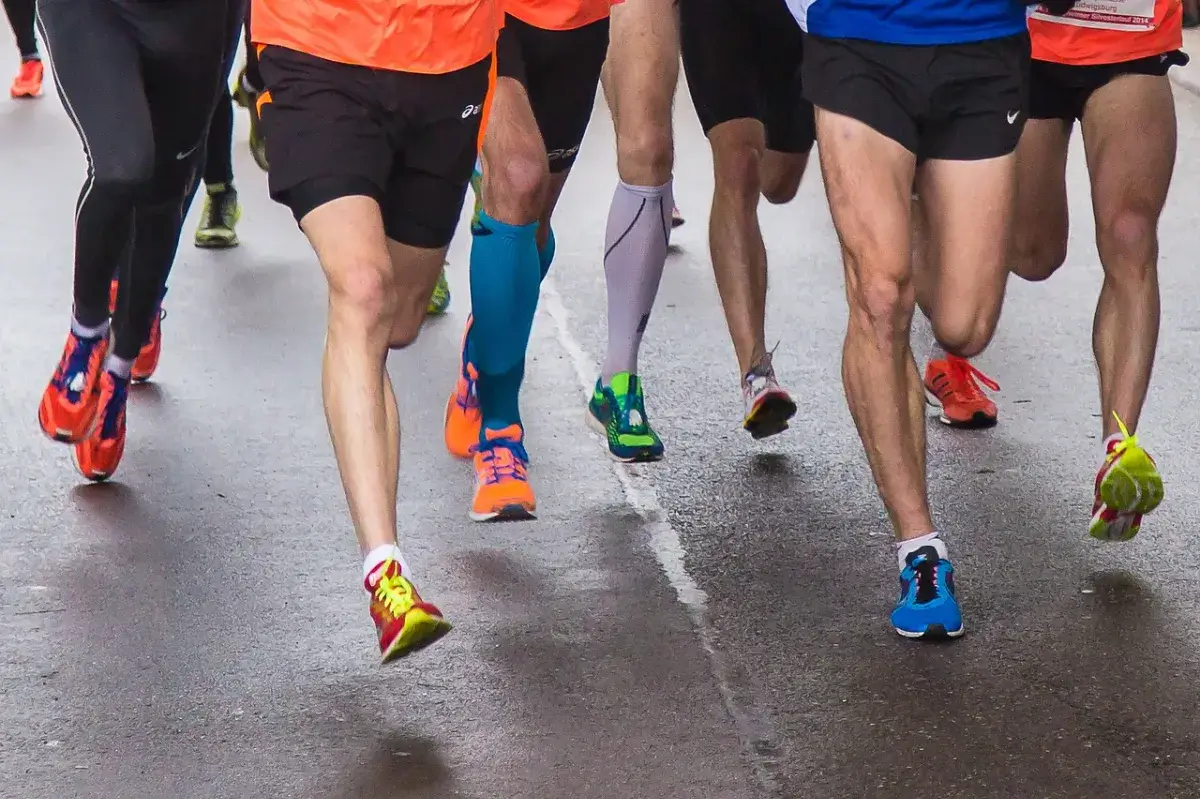
Average Marathon Time for Men
The average marathon times for most runners can vary widely depending on the runner's experience level, fitness, and age. Here's a general breakdown
| Runner Level | Average Marathon Time for Men |
|---|---|
| Beginners | 4:30 - 5:30 hours |
| Intermediate | 3:30 - 4:30 hours |
| Advanced | Under 3:30 hours |
Average Marathon Time for Women
The average marathon times can vary widely depending on the runner's experience level, fitness, and age. Here's a general breakdown
| Runner Level | Average Marathon Time for Women |
|---|---|
| Beginners | 5:00 - 6:00 hours |
| Intermediate | 4:00 - 5:00 hours |
| Advanced | Under 4:00 hours |
World Record in Modern Olympic Games
Men's world record
| Rank | Mark | Competitor | DOB | Nat | Venue | Date |
|---|---|---|---|---|---|---|
| 1 | 2:00:35 | Kelvin KIPTUM | 02 DEC 1999 | KEN | Chicago (USA) | 08 OCT 2023 |
| 2 | 2:01:09 | Eliud KIPCHOGE | 05 NOV 1984 | KEN | Berlin (GER) | 25 SEP 2022 |
| 3 | 2:01:41 | Kenenisa BEKELE | 13 JUN 1982 | ETH | Berlin (GER) | 29 SEP 2019 |
| 4 | 2:02:48 | Birhanu LEGESE | 11 SEP 1994 | ETH | Berlin (GER) | 29 SEP 2019 |
| 5 | 2:02:55 | Mosinet GEREMEW | 12 FEB 1992 | ETH | London (GBR) | 28 APR 2019 |
| 6 | 2:02:57 | Dennis KIMETTO | 22 APR 1984 | KEN | Berlin (GER) | 28 SEP 2014 |
| 6 | 2:02:57 | Titus EKIRU | 02 JAN 1992 | KEN | Milano (ITA) | 16 MAY 2021 |
| 8 | 2:03:00 | Evans CHEBET | 10 NOV 1988 | KEN | Valencia (ESP) | 06 DEC 2020 |
| 8 | 2:03:00 | Gabriel Gerald GEAY | 10 SEP 1996 | TAN | Valencia (ESP) | 04 DEC 2022 |
| 10 | 2:03:04 | Lawrence CHERONO | 07 AUG 1988 | KEN | Valencia (ESP) | 06 DEC 2020 |
Women's world record
| Rank | Mark | Competitor | DOB | Nat | Venue | Date |
|---|---|---|---|---|---|---|
| 1 | 2:11:53 | Tigst ASSEFA | 03 DEC 1996 | ETH | Berlin (GER) | 24 SEP 2023 |
| 2 | 2:13:44 | Sifan HASSAN | 01 JAN 1993 | NED | Chicago, (USA) | 08 OCT 2023 |
| 3 | 2:14:04 | Brigid KOSGEI | 20 FEB 1994 | KEN | Chicago (USA) | 13 OCT 2019 |
| 4 | 2:14:18 | Ruth CHEPNGETICH | 08 AUG 1994 | KEN | Chicago (USA) | 09 OCT 2022 |
| 5 | 2:14:58 | Amane Beriso SHANKULE | 13 OCT 1991 | ETH | Valencia (ESP) | 04 DEC 2022 |
| 6 | 2:15:25 | Paula RADCLIFFE | 17 DEC 1973 | GBR | London (GBR) | 13 APR 2003 |
| 7 | 2:16:28 | Rosemary WANJIRU | 09 DEC 1994 | KEN | Tokyo (JPN) | 05 MAR 2023 |
| 8 | 2:16:49 | Letesenbet GIDEY | 20 MAR 1998 | ETH | Valencia (ESP) | 04 DEC 2022 |
| 9 | 2:16:56 | Tsehay GEMECHU | 12 DEC 1998 | ETH | Tokyo (JPN) | 05 MAR 2023 |
| 10 | 2:17:01 | Mary Jepkosgei KEITANY | 18 JAN 1982 | KEN | London (GBR) | 23 APR 2017 |
Factors Affecting Marathon Time
Having completed several marathons, I've understood the myriad factors significantly influencing a runner's marathon time. These factors are not just numbers or data points; they reflect the intricate interplay between the physical and mental aspects of running.
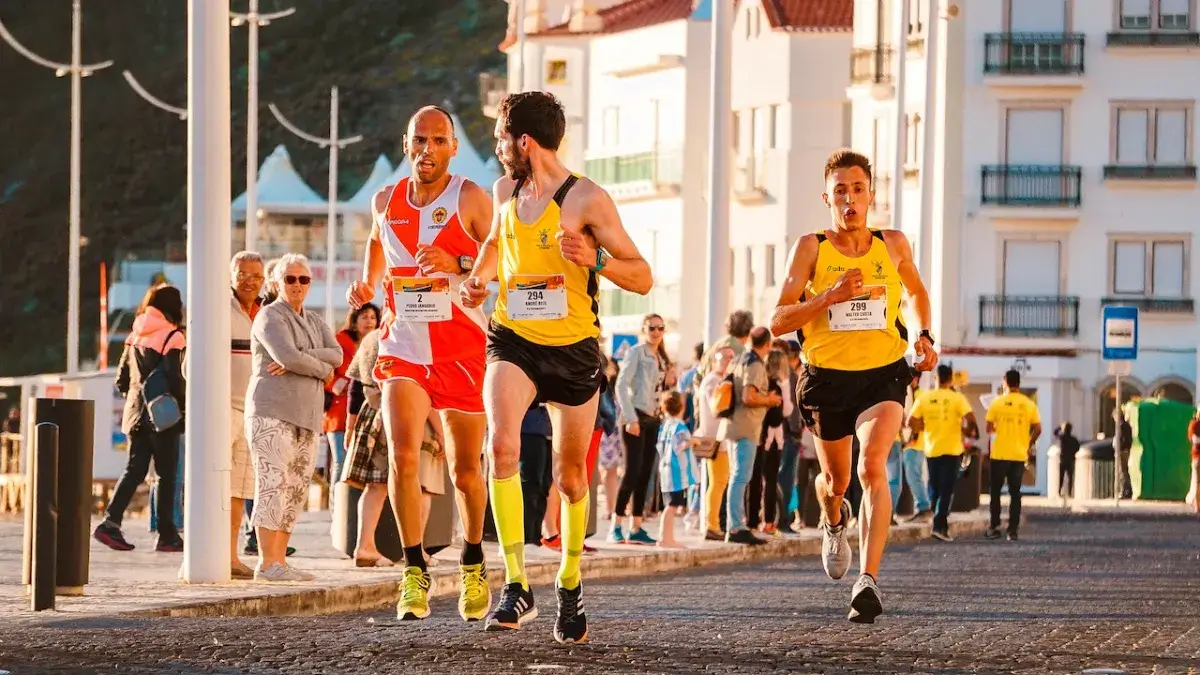
- Training: The most significant factor is the quality and consistency of training. Mileage, speed work, and long runs play a crucial role in preparing the body for the marathon distance.
- Fitness Level: A runner's overall fitness and athletic background impact their marathon time. Experienced runners often perform better due to a well-developed aerobic capacity.
- Genetics: Genetics can influence one's natural running ability, including muscle composition, lung capacity, and VO2 max.
- Age: Age can affect performance. Generally, younger runners tend to have faster marathon times but experienced older runners can still achieve impressive results.
- Nutrition: Proper nutrition and hydration during training and the race can significantly impact performance.
- Race Conditions: Weather, terrain, and altitude can affect marathon times. Heat, strong winds, or hilly courses can slow runners down.
- Race Strategy: Pace management, when to fuel, and how to handle race-day conditions all play a role.
- Mental Toughness: Pushing through pain and mental barriers is critical in a marathon. Strong mental preparation can lead to better results.
- Injuries and Health: Injuries or health issues can disrupt training and negatively impact marathon performance.
- Footwear and Gear: The choice of running shoes and gear can affect comfort and performance during the race.
- Tapering: Proper tapering training in the weeks leading up to the marathon is essential to ensure the body is rested and ready for race day.
- Support and Aid Stations: The availability of support and aid stations can influence a runner's strategy and overall time.
- Experience: Runners who have completed multiple marathons tend to have better pacing and race-day strategies.
- Motivation: Intrinsic and extrinsic motivation can drive a runner to achieve their best performance.
These factors interact uniquely for each individual, making marathon running a personal journey of dedication, preparation, and strategy.
How Long Is A Marathon – 4 Methods Of Measuring Marathon Length
A marathon is a race with a standardized length of 26.2 miles or 42.195 kilometers, as defined by international athletic governing bodies. However, there are different methods of measuring the marathon length:
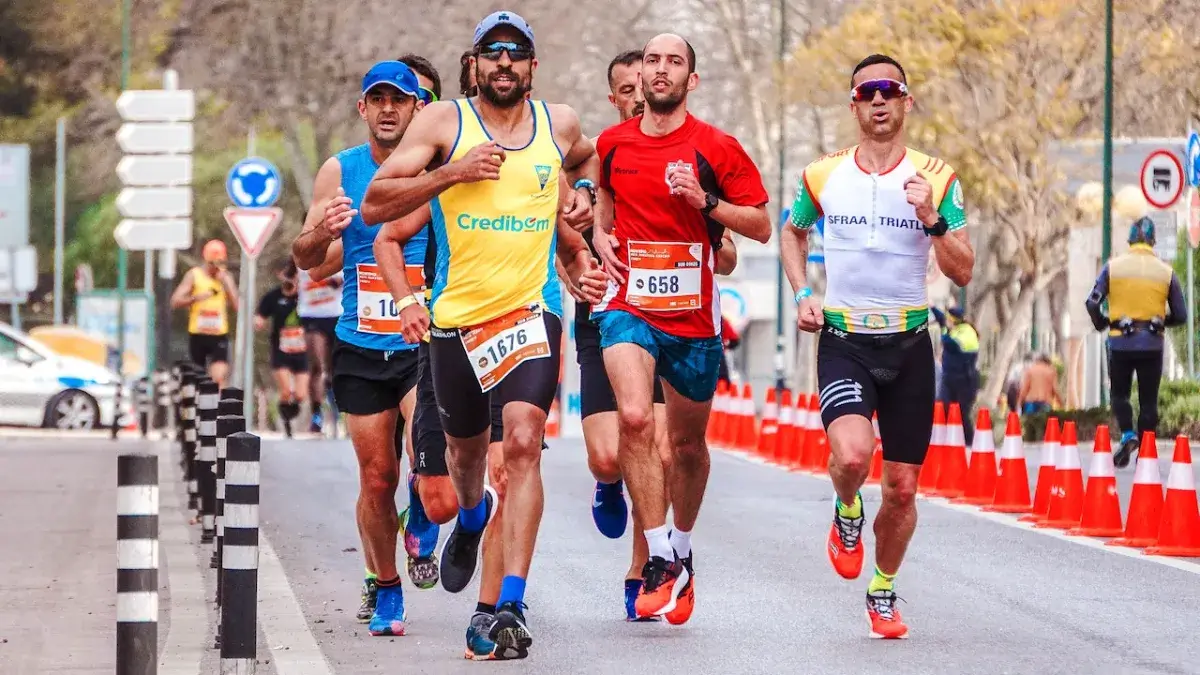
Classic Marathon Distance:
The traditional marathon distance is 26.2 miles, inspired by the legend of Philippides' run from the Battle of Marathon to Athens in 490 BC. This is the most commonly recognized marathon length.
Metric Equivalent:
The modern marathon standard is 42.195 kilometers, equivalent to 26.2 miles. This distance was established during the 1908 London Olympics to accommodate the royal family's desire for the race to start at Windsor Castle and finish in front of the royal box at the Olympic Stadium.
Certified Courses:
To ensure race accuracy, marathon courses are measured and certified by athletic governing bodies like USA Track & Field (USATF) and the Association of International Marathons and Road Races (AIMS). This involves using a calibrated bicycle with a counter to measure the shortest route. Certified courses must be within 0.1% of the established standard distance.
GPS Devices:
In the age of technology, many runners use GPS devices or smartphone apps to track their runs, including marathons. While GPS can provide reasonably accurate measurements, slight variations can occur due to factors like signal accuracy and course conditions. However, these variations are usually minor and do not significantly affect race results.
What is LSD?
Long, slow distance (LSD) running is a type of aerobic exercise commonly used by runners and endurance athletes. The goal of LSD running is to achieve several key objectives:
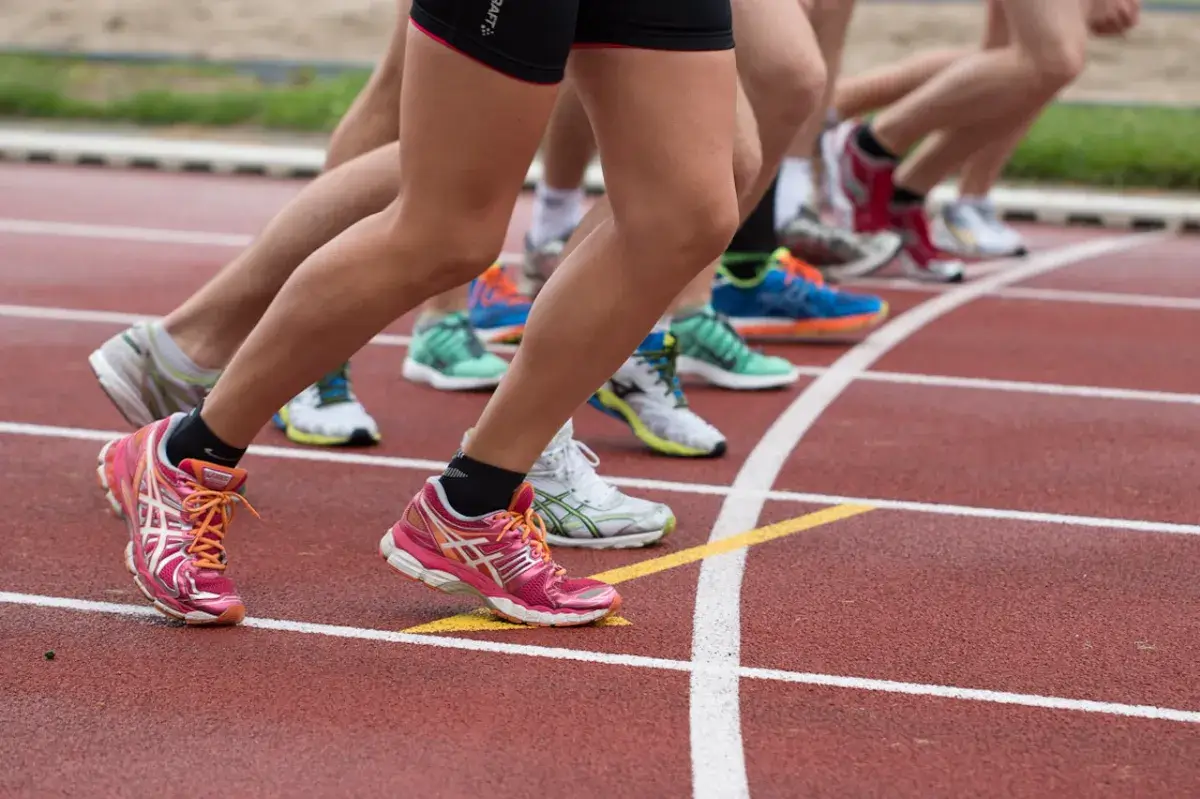
- Build Aerobic Endurance: LSD running enhances aerobic fitness and endurance. It helps the body adapt to sustained exercise over a long duration. This type of training can improve the efficiency of oxygen utilization and energy production, allowing runners to cover longer distances at a steady pace.
- Burn Fat: LSD running is often performed at a moderate intensity level, conducive to fat burning. The body relies more on fat as a fuel source during these longer, slower runs to help with weight management and body composition.
- Mental Endurance: LSD running can also be mentally challenging, as it requires a focus on pacing and perseverance. Overcoming the mental challenges of running long distances can improve mental toughness and discipline, which can benefit other aspects of life and other forms of running and endurance sports.
- Injury Prevention: Running at a slower, steady pace can be easier on the joints and muscles compared to high-intensity running. LSD running can serve as a form of active recovery or a break from more intense training, reducing the risk of overuse injuries.
- Base Building: Many runners use LSD running as a foundational element of their training program. It establishes a solid aerobic base built upon more intense workouts, such as interval training or tempo runs.
- Event Preparation: LSD running prepares for longer races like marathons or ultramarathons, where the primary goal is to complete the distance rather than achieve a specific time goal.
The key to effective LSD running is maintaining a consistent, comfortable pace that allows you to sustain the effort over a prolonged period. The distance and duration may vary depending on the individual's fitness level and goals. It's also important to listen to your body, stay hydrated, and pay attention to proper form and technique to minimize the risk of injury.
Marathon Training Plan for Beginners
This comprehensive plan divides each week into daily tasks, gradually extending the length of long runs, and incorporates a well-structured tapering phase in the weeks approaching the marathon. It's important for beginners to be flexible and make adjustments based on their own progress and individual needs.
Week 1-4 (Getting Started):
| Week | Day 1 | Day 2 | Day 3 | Day 4 | Day 5 | Day 6 | Day 7 |
|---|---|---|---|---|---|---|---|
| 1 | 2 mi | Rest | 2 mi | Rest | 3 mi | Rest | 5 mi |
| 2 | 2 mi | Rest | 2 mi | Rest | 3 mi | Rest | 6 mi |
| 3 | 3 mi | Rest | 3 mi | Rest | 4 mi | Rest | 7 mi |
| 4 | 3 mi | Rest | 3 mi | Rest | 4 mi | Rest | 8 mi |
Week 5-8 (Building Endurance):
| Week | Day 1 | Day 2 | Day 3 | Day 4 | Day 5 | Day 6 | Day 7 |
|---|---|---|---|---|---|---|---|
| 5 | 4 mi | Rest | 4 mi | Rest | 5 mi | Rest | 10 mi |
| 6 | 4 mi | Rest | 4 mi | Rest | 5 mi | Rest | 12 mi |
| 7 | 5 mi | Rest | 5 mi | Rest | 6 mi | Rest | 14 mi |
| 8 | 5 mi | Rest | 5 mi | Rest | 6 mi | Rest | 16 mi |
Week 9-12 (Building Stamina and Confidence):
| Week | Day 1 | Day 2 | Day 3 | Day 4 | Day 5 | Day 6 | Day 7 |
|---|---|---|---|---|---|---|---|
| 9 | 6 mi | Rest | 6 mi | Rest | 7 mi | Rest | 18 mi |
| 10 | 6 mi | Rest | 6 mi | Rest | 7 mi | Rest | 20 mi |
| 11 | 7 mi | Rest | 7 mi | Rest | 8 mi | Rest | 22 mi |
| 12 | 7 mi | Rest | 7 mi | Rest | 8 mi | Rest | 24 mi |
Week 13-16 (Tapering and Final Preparations):
| Week | Day 1 | Day 2 | Day 3 | Day 4 | Day 5 | Day 6 | Day 7 |
|---|---|---|---|---|---|---|---|
| 13 | 4 mi | Rest | 4 mi | Rest | 3 mi | Rest | Rest |
| 14 | 3 mi | Rest | 3 mi | Rest | 2 mi | Rest | Rest |
| 15 | 2 mi | Rest | 2 mi | Rest | 1 mi | Rest | Rest |
| 16 | Rest | Rest | Rest | Rest | Rest | Rest | 🏃♂️ |
Marathon Training Plan for Intermediate Runners
The comprehensive plan designed for intermediate runners breaks down each week into daily activities, incrementally extending the distance of long runs, and includes a well-structured tapering phase in the weeks leading to the marathon. Flexibility for adjustments based on individual progress and requirements is highly recommended.
Week 1-4 (Building a Base):
| Week | Day 1 | Day 2 | Day 3 | Day 4 | Day 5 | Day 6 | Day 7 |
|---|---|---|---|---|---|---|---|
| 1 | 5 mi | Rest | 5 mi | Rest | 6 mi | Rest | 10 mi |
| 2 | 5 mi | Rest | 5 mi | Rest | 6 mi | Rest | 12 mi |
| 3 | 6 mi | Rest | 6 mi | Rest | 7 mi | Rest | 14 mi |
| 4 | 6 mi | Rest | 6 mi | Rest | 7 mi | Rest | 16 mi |
Week 5-8 (Increasing Long Runs):
| Week | Day 1 | Day 2 | Day 3 | Day 4 | Day 5 | Day 6 | Day 7 |
|---|---|---|---|---|---|---|---|
| 5 | 7 mi | Rest | 7 mi | Rest | 8 mi | Rest | 18 mi |
| 6 | 7 mi | Rest | 7 mi | Rest | 8 mi | Rest | 20 mi |
| 7 | 8 mi | Rest | 8 mi | Rest | 9 mi | Rest | 22 mi |
| 8 | 8 mi | Rest | 8 mi | Rest | 9 mi | Rest | 24 mi |
Week 9-12 (Peak Training):
| Week | Day 1 | Day 2 | Day 3 | Day 4 | Day 5 | Day 6 | Day 7 |
|---|---|---|---|---|---|---|---|
| 9 | 9 mi | Rest | 9 mi | Rest | 10 mi | Rest | 20 mi |
| 10 | 9 mi | Rest | 9 mi | Rest | 10 mi | Rest | 22 mi |
| 11 | 10 mi | Rest | 10 mi | Rest | 11 mi | Rest | 24 mi |
| 12 | 10 mi | Rest | 10 mi | Rest | 11 mi | Rest | 26 mi |
Week 13-16 (Tapering and Final Preparations):
| Week | Day 1 | Day 2 | Day 3 | Day 4 | Day 5 | Day 6 | Day 7 |
|---|---|---|---|---|---|---|---|
| 13 | 7 mi | Rest | 7 mi | Rest | 6 mi | Rest | Rest |
| 14 | 6 mi | Rest | 6 mi | Rest | 5 mi | Rest | Rest |
| 15 | 5 mi | Rest | 5 mi | Rest | 4 mi | Rest | Rest |
| 16 | Rest | Rest | Rest | Rest | Rest | Rest | 🏃♂️ |
Marathon Training Program for Advanced Runners
The intricate program tailored for advanced runners segments the weeks into daily training activities, systematically building up the length of long runs, and incorporates a well-structured tapering period during the final weeks preceding the marathon. Flexibility is essential, encouraging adjustments based on individual progress and specific requirements.
Week 1-4 (Establishing a Base):
| Week | Day 1 | Day 2 | Day 3 | Day 4 | Day 5 | Day 6 | Day 7 |
|---|---|---|---|---|---|---|---|
| 1 | 7 mi | Rest | 7 mi | Rest | 8 mi | Rest | 14 mi |
| 2 | 7 mi | Rest | 7 mi | Rest | 8 mi | Rest | 16 mi |
| 3 | 8 mi | Rest | 8 mi | Rest | 9 mi | Rest | 18 mi |
| 4 | 8 mi | Rest | 8 mi | Rest | 9 mi | Rest | 20 mi |
Week 5-8 (Increasing Long Runs):
| Week | Day 1 | Day 2 | Day 3 | Day 4 | Day 5 | Day 6 | Day 7 |
|---|---|---|---|---|---|---|---|
| 5 | 9 mi | Rest | 9 mi | Rest | 10 mi | Rest | 22 mi |
| 6 | 9 mi | Rest | 9 mi | Rest | 10 mi | Rest | 24 mi |
| 7 | 10 mi | Rest | 10 mi | Rest | 11 mi | Rest | 26 mi |
| 8 | 10 mi | Rest | 10 mi | Rest | 11 mi | Rest | 28 mi |
Week 9-12 (Peak Training):
| Week | Day 1 | Day 2 | Day 3 | Day 4 | Day 5 | Day 6 | Day 7 |
|---|---|---|---|---|---|---|---|
| 9 | 11 mi | Rest | 11 mi | Rest | 12 mi | Rest | 30 mi |
| 10 | 11 mi | Rest | 11 mi | Rest | 12 mi | Rest | 32 mi |
| 11 | 12 mi | Rest | 12 mi | Rest | 13 mi | Rest | 34 mi |
| 12 | 12 mi | Rest | 12 mi | Rest | 13 mi | Rest | 36 mi |
Week 13-16 (Tapering and Final Preparations):
| Week | Day 1 | Day 2 | Day 3 | Day 4 | Day 5 | Day 6 | Day 7 |
|---|---|---|---|---|---|---|---|
| 13 | 7 mi | Rest | 7 mi | Rest | 6 mi | Rest | Rest |
| 14 | 6 mi | Rest | 6 mi | Rest | 5 mi | Rest | Rest |
| 15 | 5 mi | Rest | 5 mi | Rest | 4 mi | Rest | Rest |
| 16 | Rest | Rest | Rest | Rest | Rest | Rest | 🏃♂️ |
Conclusion: How Many Miles is a Marathon?
Running a 26.2 miles marathon is an extraordinary test of grit and determination, where every grueling step brings you closer to an unparalleled sense of achievement. It's a journey that empowers you to break through barriers, to persist when challenges loom large. The finish line, a beacon of triumph, justifies the sweat and toil.
If you seek the ultimate challenge, look no further – the marathon beckons. Lace up your running shoes, embrace the thrill, and get set to conquer the distance. With the proper training and unwavering commitment, your first marathon is not just a dream but an attainable victory waiting to be claimed.
